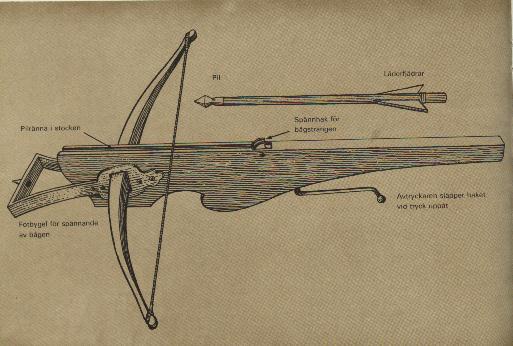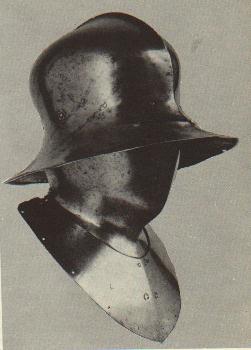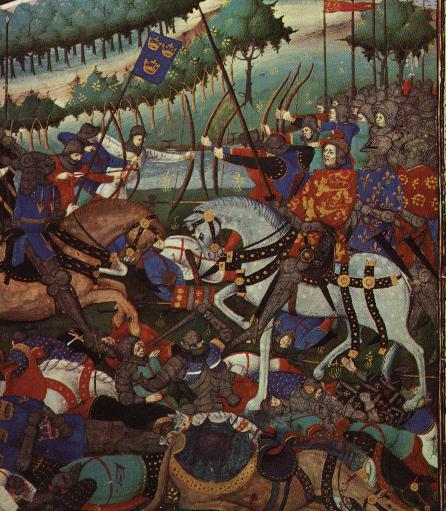
On the 10th of october 1471 all was set for one of the most important events in Swedish history. Sten Sture who had proclaimed himself chansellor of the realm led an army against the danish and union king Kristian I. Prominent persons in the Swedish nobility had tried to diminish the danish influence in Sweden for a long time. The Kalmarunion bound Sweden (with Finland) and Denmark and Norway into a close relationship. The union was almost one hundred years old and was the life achievement of the danish queen Margareta who was the daughter of Valdemar Atterdag. He had conquered Gotland from Sweden in 1361 and also took Scania back after having sold it to Sweden. His daughter managed to unite all of Scandinavia into one union by defating the Swedish king Albekt of Mecklenburg who actually was german in the battle of Falköping 1389. Nevertheless Sweden entered the union more or less volontarily |
Since the danish royal family was the union royal family and Denmark being both richer and better developed, Sweden had an inferior role. Danish taxcollectors were highly unpopular and frequent rebellions had occured. The most noticable was led by the nobleman Engelbrekt Engelbrektsson in 1434 and lasted until 1436. A series of treatys and promises of improvements kept the union together however. But soon there was to be more attempts to dissolve the union. After years of intriguing the nobleman Sten Sture gathered an army and marched on Stockholm. With him were the men of Västergötland, Östergötland and Småland. The men of Dalarna and Bergslagen also rallied to the cause but the men of Uppland sided with the king. Many of the Swedish noblemen were positive to the union. So were the men in the counsil. Swedish history has made a great affair of the presumed fact that it was a battle between Swedes and danes. This was not relly the case. With Sten Sture were the representatives of Swedish export and mining industry. As allies they had the organizers of bordertrade. That was the "Swedish team". Against them stood the league of agricultural nobility and peasants of Uppland. That was the "danish team". The term Swede was very abstact in these days. |
People identified themselves by from what part of Sweden they came from. Since the ice started to melt thousands of years before all armed onflicts had had private economical causes. If the private parties are many enough and share the same interest their cause is elevated to the common interst of all. Swede stood against Swede at the battle of Brunkeberg. On one side were Swedes fighting for a continued union, on the other Swedes fighting for themselves which in this context meant that they, without knowing it, raised the banner of nationalism. The effect of their struggle was that the foundation for the independant kingdom of Sweden, that still exists, was laid. With king Kristian was the cream of the Uppland nobility. The Vasas, the Oxenstiernas. With Sture were the Axelssons, the Trolles, Posses but also one member of the Vasas. He was to be grandfather of the most famous Vasa. Gustaf Eriksson Vasa, later king of Sweden. |

Crossbow
The population of Stockholm could watch the battle from the city walls. At 11 o´clock the danish king deployed his forces on the Brunkbergs ridge. About 5000 men and of these many german and scottish mercenaries. The chansellor held a small speech to his men. "- Do you ever want to enjoy peace and freedom in Sweden, stand with me today and do not falter. I will gladly give my life and blood and everything I own. If you will do likewise raise your hands." The soldiers who all risked life, blood and possessions as Sten Sture raised their hands and slammed their shields with their weapons. The Swedes attacked under a rain of arrows, bolts and bullets. The Swedish banner climbed higher and higher up the ridge were the hay square is today in central Stockholm. The danes fired crossbows, bows, muskets and fieldguns and managed to repulse Sten Stures men. The Swedes tried again but were repulsed once more by the stubborn danish defenders. The battle had been raging for three hours now and many were starting to feel the fatigue. The swedish knight Trotte Karlsson of Eka who fought with king Kristian is said to have sat down and taken of his helmet to rest when a Swedish bullet struck him right between the eyes. Killed imidietly, he became known as Trötte (tired) Karlsson after death.The Swedish attack was now directed at the danish defence around Klara monestry. Sten Sture fought on his horse and encouraged his people as the tale tells. King Kristian also get good recencions. He "was present and a brave leader of brave men". When the danish king sees how his men start to falter by the monestry he gathers his men around him and comes to their rescue. When Sten Sture sees the danish reinforcements he calls out "- Now the danes have come to us on even ground. Let us swing our swords generously!" The armys meet man to man and a bloody melee develops with sword, mace, morning star, axe and lance.
|
 |

At that moment strange signs are seen in the sky. Everybody shouts that it is the sword of Erik the holy who has come to protect the Swedish. At that moment the besieged Swedes in Stockholm under the leadership of Knut Possein Stockholm charge the danes flank. At the same moment Nils Sture (not a close relative to Sten Sture) appears with men from Dalarna at the other danish flank. They have moved around the ridge and are now storming down towards the surprised danes. Unable to fight in three directions simultanously, the kings army is pressed badly and the rout starts. The kings army collapses.Over 500 brave danish knights are slain. The danish flag is taken by Knut Posse. The king himself is hit by a bullet in the mouth shattering his teeth. Fleeing to the harbor he passed the temporary bridge from the Blasie-island. This had been sabotaged by the inhabitants of Stockholm and collapsed after the king had passed. Many danes drowned or were captured, among them the danish commander Klas Rönnow. The peasants from Uppland who fought with the danes had managed to get aboard the danish ships were now assaulted by their desperate former comrades in arms. 2000 men fell but the Swedes had not fallen in vain. With their courage and blood Swedens independance and safety was founded. All Swedes were buried with honors while the danes who were regarded as nothing more than moneyhungry predators were dug into the dirt anywhere. With the victory at Brunkeberg the idea of a union vanished as a program of power among the rulers of Sweden. It appears from time to time again as a last resort to get rid of powerhungry chansellors until the unionconsept is decisevly crushed by Gutsaf Vasa in 1521. A wave of nationalism surges through the country. Sten Sture was to rule Sweden as chansellor with fists of iron for 27 years. His name became connected to the struggle for freedom and was later used by Sten Sure the younger about fifty years later. Since king Kristian still was the legal King of Sweden he could not proclaim himself king. The union was still a valid idea in Denmark however. This was to cost more blood. |